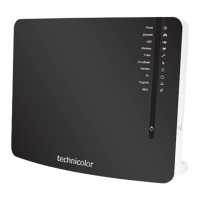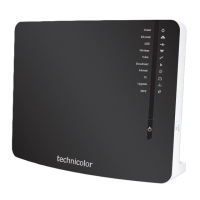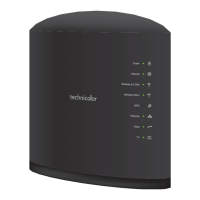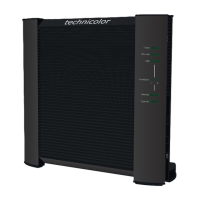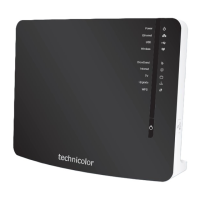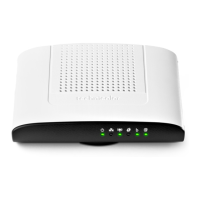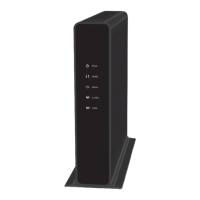23
3 MANUAL INSTALLATION
DMS-CTC-20110713-0016 v2.0
3.1.1 Setting up your MediaAccess Gateway as DSL
Gateway
Introduction
This section helps you to connect the MediaAccess Gateway to your service provider’s network.
Signal arriving at your home
The Line signal that arrives at your home consists the following components:
A Phone signal carrying the traffic for telephony.
A DSL signal carrying the Internet traffic.
DSL Gateways have a built-in solution to remove the Phone component. No additional devices are needed, you can
connect them directly to the Line.
Telephones do not have this capability, so here you have to use a filter or splitter to remove the DSL signal.
What does a filter/splitter look like
A splitter/filter is a box that typically has the following connectors:
A Line input
This connector must be connected to the input signal that needs to be filtered.
A Phone/PSTN output
This connector offers filtered output signal. It only contains the Vo i c e component and can only be used for connecting
phones.
A Modem/DSL output (optional)
This connector offers unfiltered output. It contains both the Phone and DSL signal and can be used to connect your
MediaAccess Gateway.
Connecting the cables
The procedure to be followed depends on the fact if this filter has been integrated into your MediaAccess Gateway or not.
Check the label of your MediaAccess Gateway. If the product name contains:
“wIF” (for example MediaAccess TG799vn v2 wIF) then your MediaAccess Gateway has an integrated filter. No external
filters are needed. Follow the steps described in “Scenario 2: A MediaAccess Gateway without integrated filter” on page 24.
No “wiF” (for example MediaAccess TG799vn v2) then your MediaAccess Gateway does not have an integrated filter.
Follow the steps described in “Scenario 2: A MediaAccess Gateway without integrated filter” on page 24.
This Phone signal is only used for communication over the traditional telephone network (PSTN). Voice over IP
communication will be carried by the DSL signal.
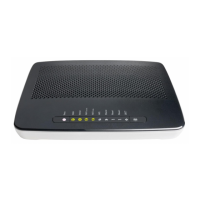
